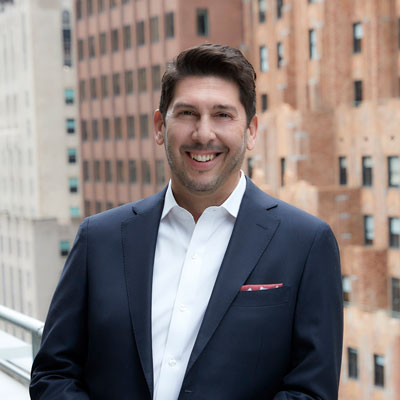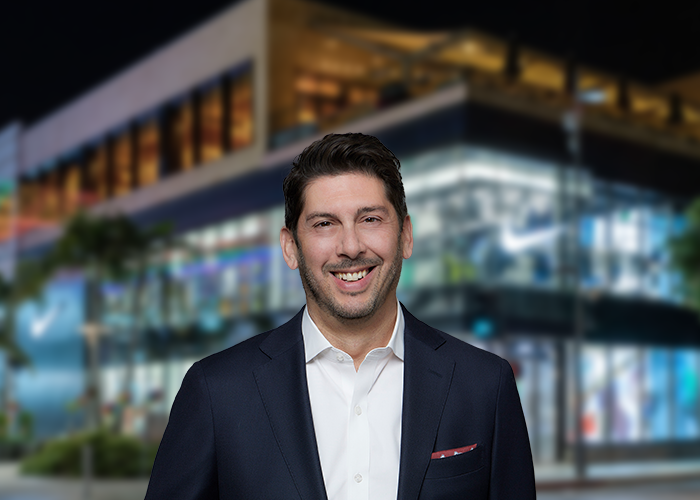California has always been a hub for innovation and lifestyle trends, and when you consider the impact of the retail industry in the state, it makes sense; the retail industry supports 25 percent of all jobs in California, and there are more than half a million retail establishments. California retailers often are setting global retail trends, and recently, those have moved away from a bigger-is-better approach to more bespoke experiences that blur the lines between digital and the physical.
Many of the current retail trends were born out of what were really desperation strategies during the pandemic but have grown and been refined in the months and years that followed. Combined with the fact that in regions like Los Angeles and Orange County, the availability of retail space has reached a decade-low, retailers are having to become more innovative with the available spaces and work more creatively with the resources at hand. In addition to innovative strategies, it means leaning on architects and contractors to help create flexible spaces that work in both the short and long term.
With work-from-home still prevalent, millennials moving out of major city centers like LA, and a growing demand for high-end retail experiences, retailers are evolving their spaces to respond to these changing consumer lifestyles. Here’s a look at some key retail trends in response to this activity in Southern California and the implications for the construction sector.
Rise of Phygital Shopping Experiences
The pandemic pushed retailers into blurring the lines between digital and physical shopping locations. With more than one-third of Californians working exclusively or part-time at home, shopping habits also changed with those work routines, and consumers became accustomed to shopping online. Retailers have realized that they can drive store traffic if consumers find value in it, and offering unique experiences, along with a seamless shopping process, has been appealing to shoppers.
Offering a new, “phygital” shopping experience allows consumers to leverage the convenience of online shopping but still have the immediacy and experience of the retail stores. In some cases, consumers can make the purchase online from home and go to the store for curbside pickup up of their purchase or a quick pickup in the store. Best Buy is one retailer that has embraced this model and has incorporated designated curbside pickup spots, a locker system, and preferred parking for those making an in-store pickup. That has been a critical part of construction considerations in store locations.
For others, that phygital experience takes place entirely in the store. Nike continues to redefine the customer experience with the new innovative Rise concept stores, which seamlessly blend physical and digital elements. The company recently renovated its flagship location in Santa Monica, and the digital design components needed to be supported from the inside out. From the open-to-structure ceilings, which are supported by a Unistrut grid system that accommodates lighting and features, to the two-story digital, LED back wall, the digital features captivate visitors as they move through the physical space.
Hub and Spoke Model Reaches Target Consumers
While retailers maintain their presence in key, traditional retail hubs, bringing the same high-end experiences to those spoke locations has become a successful part of the strategy. Execution of these smaller spoke locations is essential to create the same high-end brand experience you might find in a larger footprint.
One growing trend in these spoke locations is to build retail stores around major events. It’s no coincidence new luxury brands are entering the Las Vegas market this year as the city hosts its first F1 race later this year, expected to attract 100,000 fans to the city for not just the race but a high-end Vegas experience. In Southern California, many retailers are making new store decisions around the upcoming World Cup and Super Bowl events. The construction industry is benefiting from the need for quick turnaround times and adaptable retail spaces often needed to meet the deadlines with these event-driven locations.
Hyperlocal Appeals to Urbanites
With urban consumers increasingly focusing on being hyperlocal by choosing small businesses whenever possible, big-box retailers in large cities must diversify how they select retail locations. For example, while outdoor retailer REI has traditionally been in big-box locations, its latest location in Marina Del Ray is a focused, thoughtful experience that is authentic to the neighborhood. The new location efficiently meets the needs and desires of those who live nearby; whether shoppers are looking for the perfect athleisure outfit or to rent bikes or kayaks, they will find it in this location. Creating a store like this means a retailer needs to break from its typical retail footprint and find the right location and partners to help ensure the store meets the needs and lifestyles of those in the neighborhood.
Growth in Luxury Shopping
Since the pandemic, luxury brands have been launching new stores to meet today’s younger luxury shoppers’ demands and take more control of their brand experiences. While department stores are not going away, luxury brands are building their own boutiques within the department stores. Recently, Dior constructed not one but two exclusive retail stores within the Neiman Marcus on Wilshire Boulevard. The Dior Leather Goods and Dior Ready to Wear boutiques embody everything the brand stands for. For example, all millwork fixtures and wall panels were sourced directly from Italy. Specifying this custom millwork demands careful coordination throughout the entire space layout, particularly as construction is happening within the more extensive retail environment of the department store.
In some cases, luxury retailers take the brand experience further and incorporate hospitality features into retail stores. Most notably in LA, there is Gucci Osteria da Massimo Bottura, located on the rooftop of Gucci’s Rodeo Drive store. The restaurant offers just one more way for shoppers to experience the Gucci brand, while still driving foot traffic to the physical location.
The retail industry in Southern California is continuously evolving to meet the changing needs and preferences of consumers. These retail trends have had a direct impact on the construction industry, creating opportunities for growth, innovation, and partnerships. Construction companies that can adapt to these trends and provide sustainable, flexible, and technologically advanced retail spaces are well-positioned to thrive in this dynamic market. As Southern California continues to drive retail trends, the construction industry will play a crucial role in shaping the future of the retail spaces.
About the Author
Vincent Spataro is the West Coast Senior Director at Schimenti. With over 25 years of experience, Vinnie has a track record of service delivery for premiere clients within the retail, commercial, sports, and entertainment sectors in the Southern California market. He has led the construction of iconic brands, including Louis Vuitton’s Rodeo Drive Flagship, SoFi Stadium, and the Glorya Kaufman Performing Arts Center. Vinnie oversees Schimenti West Coast accounts, project and field teams, and operations. He works closely with clients to ensure the successful completion of projects and is highly regarded for his technical expertise and unwavering commitment to delivering exceptional customer service.


